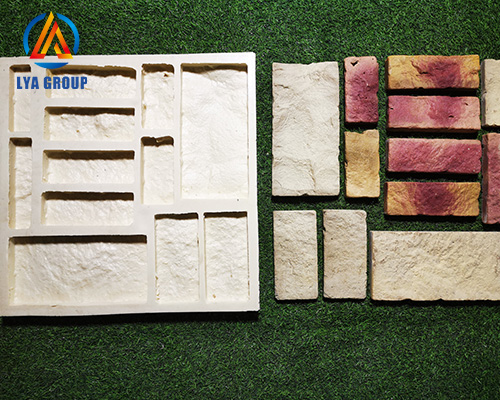Overview of Artificial stone mold
News 2023年12月6日 191

Mold maintenance and cleaning: Proper maintenance and cleaning of artificial stone molds are essential for their longevity and optimal performance. After each use, molds should be cleaned thoroughly to remove any residue or casting material. This helps prevent buildup and ensures the next casting cycle produces high-quality results. Regular inspection of the mold for any signs of wear, damage, or degradation is also important to address any issues promptly.
Mold durability and lifespan: The durability and lifespan of artificial stone molds can vary depending on factors such as the quality of the mold material, frequency of use, casting material properties, and the care taken during handling and storage. High-quality molds made from durable materials and properly maintained can last for a significant number of casting cycles, providing long-term value.
Mold precision and dimensional accuracy: Artificial stone molds are designed to produce precise and dimensionally accurate cast stone products. The mold design, manufacturing techniques, and quality control measures all contribute to achieving consistent and accurate results. This precision ensures that the final cast stone products meet the desired specifications and fit seamlessly in their intended applications.
Mold customization and flexibility: Artificial stone molds offer a high level of customization and flexibility. Manufacturers can create molds to produce a wide range of shapes, sizes, textures, and finishes. Mold designs can be tailored to meet specific customer requirements, allowing for the production of unique and custom-made cast stone products.
Mold replication and consistency: Artificial stone molds are designed to replicate specific patterns, textures, and details consistently across multiple castings. This ensures that each cast stone product closely resembles the desired design and maintains a consistent appearance. Mold replication techniques, such as using master molds or digital scanning, help achieve this level of consistency.
Mold cost considerations: The cost of artificial stone molds can vary depending on factors such as mold size, complexity, material, and manufacturing techniques. More intricate molds or those made from high-quality materials may be more expensive upfront but can provide better durability and longer lifespan, resulting in cost savings over time. It’s important to evaluate the cost in relation to the expected lifespan and production volume to determine the overall value.
Mold production capacity: The production capacity of artificial stone molds can vary depending on the manufacturing process and equipment used. Some molds may allow for single-cavity production, while others can have multiple cavities, enabling simultaneous casting of multiple products. The production capacity should be considered when planning for large-scale or time-sensitive production requirements.
Contact Us
- Henan e-commerce Industrial Park, Dongqing street, high tech Zone, Zhengzhou City, Henan Province.
- +8615225163054
- Harvey
- harvey_lya@zzlya.com